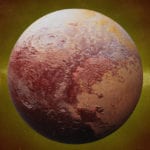 Weird Stuff
Weird Stuff  Weird Stuff
Weird Stuff  Mysteries
Mysteries 10 Tragic Disappearances and Deaths in Joshua Tree National Park
 History
History 10 Ways Childhood Really Sucked in the Old West
 Music
Music 10 Name Origins of Famous Bands from the 1990s
 Religion
Religion 10 Biggest Turnarounds by the Catholic Church
 Weird Stuff
Weird Stuff 10 Unbelievable Times Laws Had Unintended Consequences
 Humans
Humans Ten Historic Women Who Deserve Way More Credit Than They Got
 Movies and TV
Movies and TV 10 Films That Spawned Major Lawsuits
 History
History Ten Times Towns Were Wiped Off the Face of the Earth
 Creepy
Creepy 10 of the Most Disturbingly Haunted Public Houses in the UK
 Weird Stuff
Weird Stuff 10 Niche Subcultures That Are More Popular Than You Might Think
 Mysteries
Mysteries 10 Tragic Disappearances and Deaths in Joshua Tree National Park
 History
History 10 Ways Childhood Really Sucked in the Old West
Who's Behind Listverse?

Jamie Frater
Head Editor
Jamie founded Listverse due to an insatiable desire to share fascinating, obscure, and bizarre facts. He has been a guest speaker on numerous national radio and television stations and is a five time published author.
More About Us Music
Music 10 Name Origins of Famous Bands from the 1990s
 Religion
Religion 10 Biggest Turnarounds by the Catholic Church
 Weird Stuff
Weird Stuff 10 Unbelievable Times Laws Had Unintended Consequences
 Humans
Humans Ten Historic Women Who Deserve Way More Credit Than They Got
 Movies and TV
Movies and TV 10 Films That Spawned Major Lawsuits
 History
History Ten Times Towns Were Wiped Off the Face of the Earth
 Creepy
Creepy 10 of the Most Disturbingly Haunted Public Houses in the UK
10 Science Stories Of 2017 That Sound Like Sci-Fi Taglines
With another year in the rearview mirror, it’s time to sit back, take a deep breath, and look at some of the scientific headlines that we might have missed. Scientists are continuously churning out new developments in various fields. To name a few, nanotechnology, gene therapy, and quantum physics are always breaking new ground.
Science headlines are starting to read more and more like articles from sci-fi magazines. Given what 2017 brought, we can hardly wait to see what 2018 unveils . . .
10 Scientists Create Time Crystals And Break Time-Translation Symmetry

According to the first law of thermodynamics, perpetual motion machines which produce work without any energy input are impossible. However, earlier this year, physicists created structures called time crystals which certainly put that notion to the test.
Time crystals act as the first real-world examples of a new state of matter called “non-equilibrium,” where the atoms have varying temperatures and are never in thermal equilibrium with one another. Time crystals have an atomic structure which repeats not just in space but also in time, allowing them to maintain constant oscillation without energy.[1] This occurs even at ground state, which is the lowest energy state where movement, theoretically, is impossible because it requires energy expenditure.
So are time crystals breaking the laws of physics? Technically, no. Conservation of energy can only be defined within systems with time-translation symmetry, the idea that the laws of physics are the same everywhere and at all times. And if there’s one thing that time crystals do break, it’s time-translation symmetry. They’re not the first, however. Magnets are also frequently brought up as naturally asymmetrical objects because they have a north end and a south end.
Another reason why time crystals don’t break the laws of thermodynamics is because they are not completely isolated. They need a “nudge” every now and then—just a bit of outside energy to get them to start flipping their states over and over again. Possible future applications for time crystals involve information transfer and storage within quantum systems. They could play a crucial role in quantum computing.
9 Dragonfly Wings Are ‘Alive’
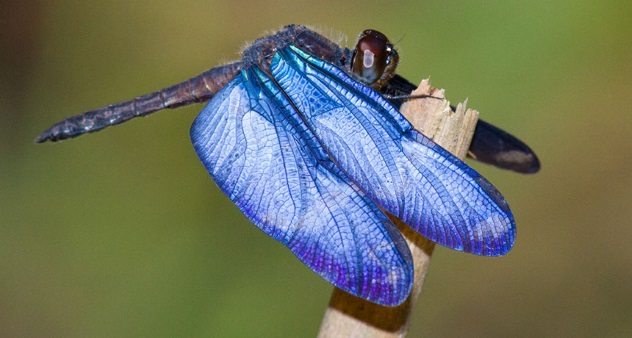
Simplified, Merriam-Webster defines “wing” as a movable feathered or membranous appendage used by birds, insects, and bats to achieve flight. It is not supposed to be alive, but entomologists at Kiel University in Germany made some startling discoveries that suggest otherwise, at least in morpho dragonflies.
Insects breathe through a tracheal system. Air enters their bodies through external openings called spiracles. It then goes through a complex network of tracheal tubes, which deliver the air to all cells of the body. Wings, however, are made up almost entirely of dead tissue, which dries up and either becomes translucent or covered in color patterns. The areas of dead tissue are bordered by veins, which are the only wing components that are part of the breathing system.
However, when entomologist Rhainer Guillermo Ferreira looked at a wing of the male Zenithoptera dragonfly through an electron microscope, he saw tiny, branching tracheal tubes.[2] This marks the first such observation in any insect wing. It will take a lot of testing to determine if this physiological feature is particular to this species or, perhaps, common in dragonflies or even in other insects. It could even be a mutation found by chance in just one individual, but experts are doubtful. The presence of abundant supplies of oxygen could explain the vibrant, complex blue colors found on the wings of Zenithoptera dragonflies, which contain no blue pigment.
8 Ancient Tick Found Filled With Dinosaur Blood
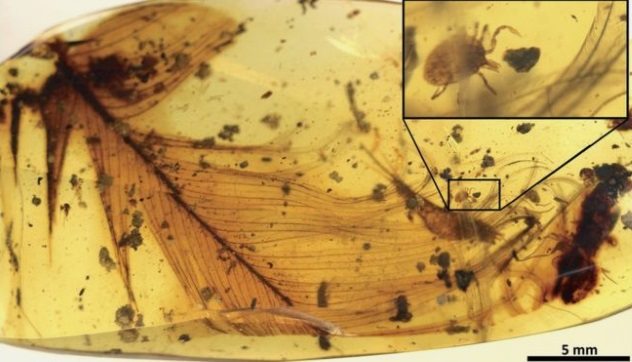
We have discovered some amazing things preserved in amber, but this year’s findings might take the cake. Scientists in Myanmar uncovered pieces of amber dated to 99 million years ago which contain parasites similar to modern ticks. One of them was entangled in a dinosaur feather, two were found with bits of a dinosaur nest, and the fourth was filled with dinosaur blood.[3]
Of course, this made people immediately think of a Jurassic Park–like scenario where we could use the blood to bring dinosaurs back to life. Unfortunately, that won’t happen anytime soon because extracting DNA samples from these kinds of amber-preserved fossils is impossible. There is still ongoing debate regarding how long a DNA molecule can last, but even the most optimistic estimates say only a few million years under ideal conditions.
Even if it didn’t bring back the dinosaurs, the newly named Deinocroton draculi (Dracula’s terrible tick) is still an extraordinary find that provided us with new information. We now know not only that ancient ticks targeted feathered dinosaurs but also that they infested the dinosaur nests.
7 Adult Human Undergoes Gene Modification
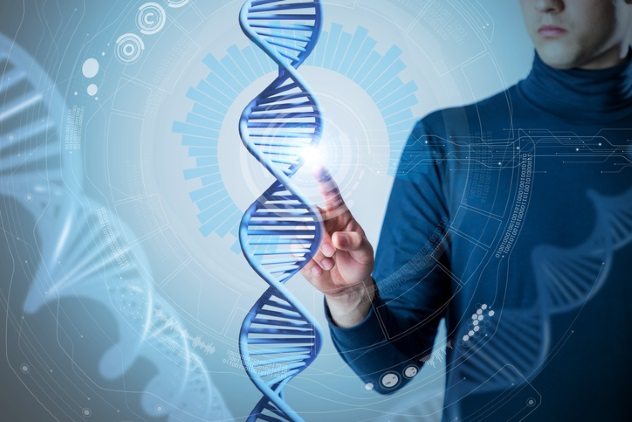
The current apex of gene therapy is Clustered Regularly Interspaced Palindromic Repeats or CRISPR. It is a family of DNA sequences which now form the basis for a technology called CRISPR/Cas9, which, theoretically, could permanently alter a human’s DNA.
In 2017, the gene editing tool took a step forward after a team from Beijing’s Proteome Research Center announced it successfully used CRISPR/Cas9 to correct disease-causing mutations in viable human embryos. A different team from London’s Francis Crick Institute went the opposite route and used the technology to intentionally create mutations in human embryos for the first time. (Specifically, they “switched off” a gene, preventing the embryos from developing into blastocysts.)
The studies showed that CRISPR/Cas9 works and with relative ease. However, this prompted intense ethical debates about how far this technology should be taken. Theoretically, it could lead to “designer babies” which could possess intellectual, athletic, and physical characteristics per the specifications of the parents.
Ethics aside, there was an even bigger development this November when CRISPR/Cas9 was used for the first time on an adult human. 44-year-old Brad Madeux from California suffers from Hunter syndrome, an incurable disease which could eventually confine him to a wheelchair. He was injected with billions of copies of the corrective gene and a genetic tool used to cut his DNA, insert the gene, and stitch it back up.[4] It will take a few months before we can tell if the procedure was successful or not.
6 Which Came First—The Sponge Or The Jelly?

A new research paper published this year seeks to end, once and for all, the long-standing debate regarding the origin of animals. According to the study, sponges are the “sisters” of every other animal in the world.[5] This comes from the fact that sponges were the first group to branch off from the evolutionary tree which, at the time, contained only the primitive common ancestor to all animals. This would have happened roughly 750 million years ago.
Prior to this story, the hotly contested debate seemed to have whittled down to just two candidates: the aforementioned sponges and marine invertebrates called comb jellies. While sponges are simple creatures that sit on the ocean floor and survive through filter feeding, comb jellies are more complex. They resemble jellyfish, are able to propel themselves through water, can create light patterns, and have simple nervous systems. Finding out which one came first also means finding out what our common ancestor looked like. It is considered a vital part in tracing our evolutionary timeline.
While the study boldly proclaims the matter settled, just a few months prior, another study came out saying that comb jellies are our evolutionary “sisters.” It is too early to tell if the latest research is, indeed, foolproof enough to quell any lingering doubts.
5 Raccoons Have Passed An Ancient Intelligence Test
Sometime around the sixth century BC, Greek storyteller Aesop wrote or collected a bunch of fables which are now collectively known as Aesop’s Fables. Among them was a tale called “The Crow and the Pitcher,” which showcased a thirsty crow getting a drink from a pitcher by dropping pebbles into it, raising the water level until the bird could reach it.
A few thousand years later, scientists realized that the story presented a good way of testing animal intelligence. The experiment would show that the creature being tested has an understanding of cause and effect. True to the tale, crows excelled, as did other corvids, like rooks and jays. Great apes have also passed the test, and this year, another animal was added to the list—the raccoon.
During the Aesop’s Fable test, eight raccoons were presented with a cylinder containing a marshmallow floating on water which was too low to reach. Two of them successfully dropped pebbles to raise the water level and reach their treat.
Other test subjects found their own creative solutions which the testers had not anticipated. Channeling her experience as a trashcan tipper, one raccoon climbed on top of the cylinder and began swaying from side to side until she knocked it over.[6] In another test using floating and sinking balls instead of pebbles, examiners were hoping the raccoons would use sinking balls and discard the floating ones. Instead, some animals dunked a floating ball repeatedly until bits of marshmallow either splashed on the side of the cylinder or got stuck to the ball, making them easy to retrieve.
4 Physicists Create First Topological Laser
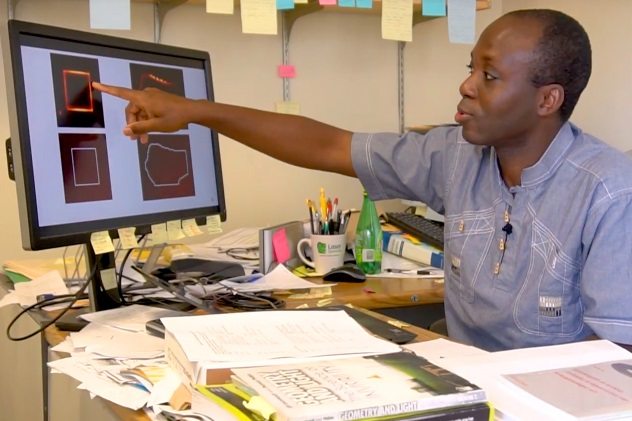
Physicists from the University of California, San Diego, claim to have constructed a new kind of “topological” laser which can take on any shape and snake around a cavity without having the light scatter. The device works based on the concept of topological insulators (materials which are insulating in their bulk but conductive along their surfaces), which won the Nobel Prize in Physics in 2016.
Normally, a laser cavity amplified by light is shaped like a ring. This is more efficient than shapes with sharp corners but still leaves wasted space between the rings. The research team overcame this obstacle by creating a topological cavity using a photonic crystal as a mirror. Specifically, they used two photonic crystals with differing topologies, one being a star-shaped unit cell in a square lattice and the other a triangular lattice with cylindrical air holes. Team member Boubacar Kante compared them to a bagel and a pretzel: Although they’re both bread with holes, the different number of holes make them distinct shapes.[7]
Once the crystals are in place and the interface takes the desired shape, the system is turned on by applying a magnetic field. This changes the direction in which the light is emitted, thus being able to guide the flow of light. Immediate practical applications involve packing more lasers onto a chip, thus increasing the speed of optical communications. However, in the grand scheme of things, this is seen as a step forward in the pursuit of optical computing.
3 Scientists Are Excited About Excitonium
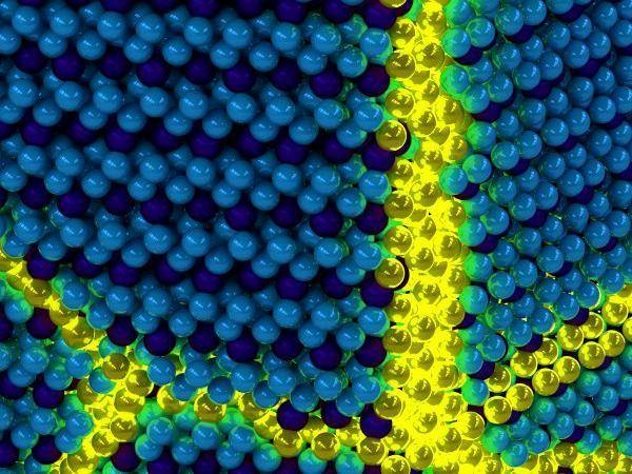
Physicists around the globe are enthusiastic about the discovery of a new form of matter, appropriately named excitonium. It is made out of weird particles called excitons, which are the bound state of an escaped electron and the hole it just left behind, attracted to each other by the Coulomb force. Moreover, Harvard theoretical physicist Bert Halperin was the first to postulate the existence of excitonium back in the 1960s, and scientists have been trying to prove him right (or wrong) ever since.
Like many major scientific discoveries, this one involved a fair amount of serendipity. The team responsible for the find from the University of Illinois at Urbana-Champaign did, in fact, develop a new technique called momentum-resolved electron energy-loss spectroscopy (M-EELS) specifically to identify excitons.[8] However, their “Eureka” moment happened when the researchers were doing calibration tests for their new method. One team member entered the room while everyone else was staring at a whiteboard and said that they just measured a “soft plasmon,” the precursor to exciton condensation.
Study leader Professor Peter Abbamonte likened the discovery to that of the Higgs boson—it won’t have any immediate real-world applications, but it shows that our current understanding of quantum mechanics is on the right track.
2 Scientists Develop Nanomachines That Kill Cancer
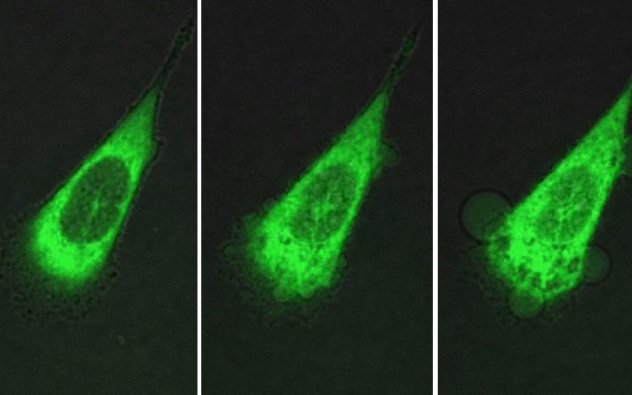
Researchers from Durham University claim to have developed nanomachines which are capable of drilling into cancer cells and killing them in just 60 seconds.[9] In a successful test conducted at the university, the tiny machines took between one and three minutes to penetrate the outer membrane of a prostate cancer cell and destroyed it instantly. (The rightmost image above shows cytoplasm leaking out from an attacked cancer cell.)
The nanomachines are 50,000 times smaller than the diameter of a human hair. They are activated by light and spin two to three million times per second in order to be able to burrow through cell linings. When they reach their target, they can either blast it or deliver a therapeutic agent payload.
So far, the nanomachines have only been used on single cells, but the encouraging results prompted scientists to move up to microorganisms and small fish. Their current goal is to advance to rodents soon and, eventually, to humans.
1 Interstellar Asteroid Might Be An Alien Spacecraft
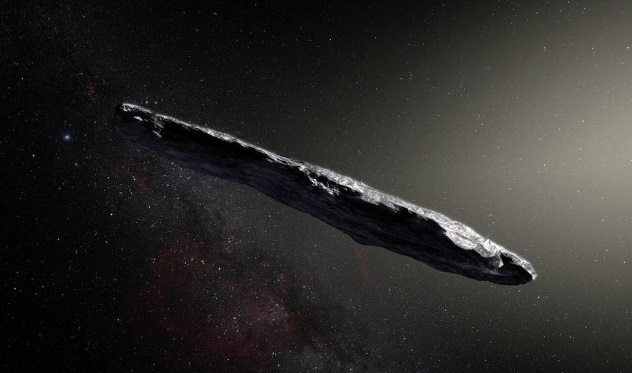
It’s only been a couple of months since astronomers gleefully announced the discovery of our first ever interstellar visitor, an asteroid named ‘Oumuamua. Since then, they’ve observed many strange things about the celestial object, even for something that’s not from our solar system. In fact, it is so strange that they believe it’s possible it could be an alien spacecraft.
First off is the shape. ‘Oumuamua has a cigar shape with a ten-to-one length-width ratio, unlike any other asteroid ever observed. At first, we thought it was a comet, but we realized that wasn’t the case when it didn’t sprout a tail after getting close to the Sun. Moreover, some experts argue that the speed at which the object is twirling would break apart a normal asteroid. Instead, it seems as if it is specifically designed to endure interstellar travel.
So if it is artificial, what could it be? Some say an alien probe, while others think it could be a spaceship whose engines have failed and is now adrift through space. Either way, programs such as SETI and Breakthrough Listen think ‘Oumuamua warrants further investigation and have aimed their telescopes at it to listen for any kind of radio signals.[10]
So far, it’s not looking good for the alien hypothesis, as SETI’s initial observations turned up nothing. Many space scientists remain pessimistic about the chances of ‘Oumuamua being of alien origin, but further examination is certainly needed in order to determine what the mysterious object actually is.
Read about more amazing scientific breakthroughs on Top 10 Strange Scientific Discoveries About Sound and 10 Recent Whimsical Scientific Discoveries.





